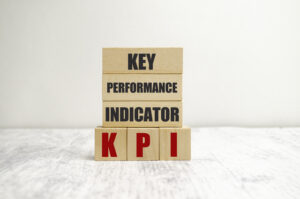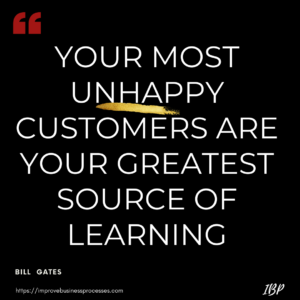When selecting performance key metrics for small business, you must ensure they provide real insights into how the business is running, rather than being just vanity metrics. The best measures should help you make informed decisions and drive improvement.
This article discusses the top five questions your performance measures should answer about your business and which metrics to avoid.
Avoid Selecting These 4 Performance Metrics
When selecting performance metrics, don’t chase vanity metrics—big numbers (like social media followers) that look impressive but don’t impact your bottom line.
Avoid measuring everything—too much data leads to analysis paralysis. Don’t ignore context—a metric is useless if it doesn’t align with your goals. Steer clear of isolated metrics—one number alone rarely tells the full story.
And most importantly, don’t neglect actionability—if a metric doesn’t lead to clear decisions or improvements, it’s just noise.
Focus on relevant, meaningful, and actionable metrics that drive business success, not just ones that make you feel good.

Are we financially healthy?
Your business can look successful on the surface—steady sales, busy employees, and a packed schedule—but if the numbers behind the scenes don’t add up, you’re skating on thin ice.
Start with net profit margin—this tells you how much money you actually keep after covering expenses. A high revenue with a razor-thin profit margin? That’s a red flag. Then there’s cash flow, the ultimate truth-teller. A profitable business can still fail if cash isn’t coming in fast enough to cover bills.
Don’t forget gross profit margin—this shows if your pricing and costs make sense. If your margins are shrinking, either expenses are creeping up or you’re undercharging. Accounts receivable turnover is another key metric. If customers take forever to pay, your bank account suffers—even if sales look good on paper.
Bottom line? A healthy business isn’t just about making money; it’s about keeping it, managing it wisely, and ensuring you’re not running on fumes. Regularly tracking these numbers can save you from financial surprises and keep your business thriving long-term. Because let’s be real—no one starts a business just to break even.
- Key Metrics: Net profit margin, cash flow, gross profit margin, accounts receivable turnover
- Why it Matters: Profitability is important, but cash flow keeps the lights on. You need to know if you’re making money and if you have enough cash on hand to keep operating smoothly.
Are we operating efficiently?
Efficiency isn’t about working harder—it’s about working smarter. If you’re constantly putting out fires, running on empty, and barely keeping up, something’s off. Start by looking at revenue per employee—are you getting enough value from your team, or are inefficiencies dragging productivity down?
Next, customer acquisition cost (CAC): if it costs you more to land a new customer than they’ll ever spend, you’ve got a money leak. Inventory turnover is another silent efficiency killer—too much inventory ties up cash, while too little leads to delays and unhappy customers.
And let’s talk about labor productivity. If your team is constantly redoing work, waiting on approvals, or dealing with clunky processes, it’s time for a systems upgrade. Streamlining operations with automation, better training, and clear workflows can save time, money, and sanity.
Running an efficient business isn’t about cutting corners—it’s about eliminating waste. The smoother your operation runs, the more time you have to focus on growth instead of just staying afloat.
- Key Metrics: Revenue per employee, customer acquisition cost (CAC), inventory turnover, labor productivity
- Why it Matters: Efficiency directly impacts profitability. If you’re spending too much on operations or have excess inventory, you’re leaving money on the table.
Are our customers satisfied and loyal?

A steady flow of new customers is great, but if your existing ones aren’t sticking around, you’ve got a problem. Customer retention rate tells you how well you’re keeping people coming back. If it’s low, you’re spending more to replace lost customers—ouch.
Then there’s Net Promoter Score (NPS)—essentially, would your customers recommend you? A high score means happy customers; a low score means you’re probably getting trashed in private conversations. Customer lifetime value (CLV) is another biggie—how much revenue does one customer bring in over time? If your CLV is low, you might need to rethink pricing, upsells, or loyalty programs.
And don’t ignore online reviews—they can make or break your reputation. A few bad reviews happen, but if negative feedback is a pattern, it’s time to fix the root cause.
Happy customers are your best marketers. They’ll spend more, return often, and bring their friends. Unhappy customers? They’ll leave quietly—or worse, loudly. Keep them satisfied, and they’ll do half your marketing for you.
- Key Metrics: Customer retention rate, Net Promoter Score (NPS), customer lifetime value (CLV), online reviews
- Why it Matters: It’s far cheaper to keep an existing customer than to acquire a new one. If customers aren’t coming back or referring you, there’s a problem.
Is our marketing strategy working?
Throwing money at marketing without tracking results is like lighting cash on fire and hoping it turns into sales. You need to know if your efforts are actually bringing in customers—or just boosting vanity metrics.
Start with conversion rate—how many leads actually turn into paying customers? If people are clicking but not buying, something’s off (pricing, messaging, website experience). Cost per lead is another key measure—are you spending more to acquire leads than they’re worth?

Your website traffic can tell you if people are finding you, but engagement matters more. Are they sticking around or bouncing faster than a bad check? Social media engagement is another indicator—likes and shares are nice, but comments and DMs show real interest.
If your numbers aren’t where you want them, tweak your strategy. Maybe your messaging needs work, your offer isn’t compelling, or your audience isn’t the right fit. Marketing isn’t a set-it-and-forget-it game—it’s constant testing, tweaking, and optimizing.
- Key Metrics: Conversion rate, cost per lead, website traffic, social media engagement
- Why it Matters: If you’re spending money on marketing but not seeing results, you need to pivot before wasting more budget.
Are we growing in a sustainable way?
Growth is exciting—until it turns into chaos. Expanding too fast without the right structure can lead to burnout, cash shortages, and a logistical nightmare. Year-over-year revenue growth is a solid starting point, but growth should be profitable—not just bigger numbers on paper.
Customer growth rate is another key factor. If you’re gaining customers but struggling to serve them, you might need to scale operations first. On the flip side, if you’re not growing at all, your marketing or customer retention strategies may need tweaking.
Don’t forget about your employees. A stressed-out, overworked team isn’t sustainable. Employee satisfaction is a huge factor in long-term growth—happy teams lead to better service, which leads to happy customers.
Lastly, debt-to-equity ratio helps keep financial growth in check. Taking on too much debt to fuel expansion can backfire if sales slow down. Sustainable growth means scaling at a pace where you can maintain quality, cash flow, and sanity. Because a booming business is only good if it doesn’t implode.
- Key Metrics: Year-over-year revenue growth, customer growth rate, employee satisfaction, debt-to-equity ratio
- Why it Matters: Growth is great—but only if it doesn’t overextend your resources. Rapid expansion without proper financial planning can sink a small business.
Conclusion
By tracking the right performance measures, you can spot trends, fix inefficiencies, and make strategic decisions that keep your business thriving. Which of these do you think your business needs the most work on? Contact BCINC to help you today!
Related Articles
- How to Create Business Goals – Learn The Right Way to Do it
- How to Increase Customer Satisfaction
- How to Restore Control to Your Business. Create a Business Plan
FAQs for How to Use Key Metrics for Small Business to Answer 5 Questions
What are key metrics for small businesses?
Key performance metrics measure financial health, efficiency, customer satisfaction, marketing effectiveness, and sustainable growth. Examples include profit margin, customer retention, conversion rate, and revenue growth. Tracking these help optimize operations and decision-making.
How do key performance metrics improve small business operations?
Metrics highlight inefficiencies, track financial stability, measure customer loyalty, assess marketing success, and ensure sustainable growth. Using data-driven insights, businesses can refine strategies, cut costs, and enhance overall performance for long-term success.
How often should small businesses review their key metrics?
Small businesses should review key performance metrics monthly to track trends, identify issues early, and adjust strategies. Some metrics, like cash flow and sales, may need weekly monitoring for optimal decision-making.

